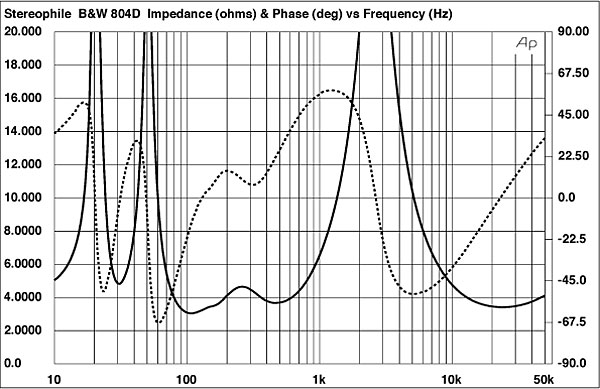While amp output wattage combined with speaker sensitivity determines overall volume, the performance of the speaker is also dependent on how much instantaneous and unrestricted current the amplifier and cabling can deliver. Higher current will result in the ability to control the speakers better. It is a blanket statement to say Class D amps do not deliver current as well as Class A or Class AB amps, and it is not true for all of them. But the statement is true for many of them. Class D amps were designed to produce power in the most efficient of ways.
Bel Canto’s non-reference class D amps are pretty much unmodified ICEpower modules in a pretty chassis. They handle frequency extremes well but lack the current delivery and filtering to thicken the rest of the frequency spectrum. Pair that with a hard to drive speaker that tends to be tipped up in its sonic signature, and you won’t get a good mix.
If you look at the impedance chart of the B&W Diamond and Nautilus speakers, they all look something like this (I could not find the 803N specifically but I found a few 801N, 804D, etc and they all look similar):

In the chart above, the impedance dips below 4 ohms for much of the lower midrange (100-700hz). Without an amp that has solid current delivery, these speakers will sound thin in these frequencies.
The Aegir on the other hand emulates a Class A amp and prioritizes current over power. While only 20 watts per channel at 8 ohms and 40 watts per channel at 4, it will handle the impedance curves of a current hungry speaker better and enable control and improved tone than the ICEpower Bel Canto, but will not play as loud.
A quick search also shows that the Goldenear Triton has similar dips below 4 ohms, but not as deep and not as wide across the spectrum compared to the B&Ws. But this also confirms why you likely prefer the Aegir over the Class D amp you have.


